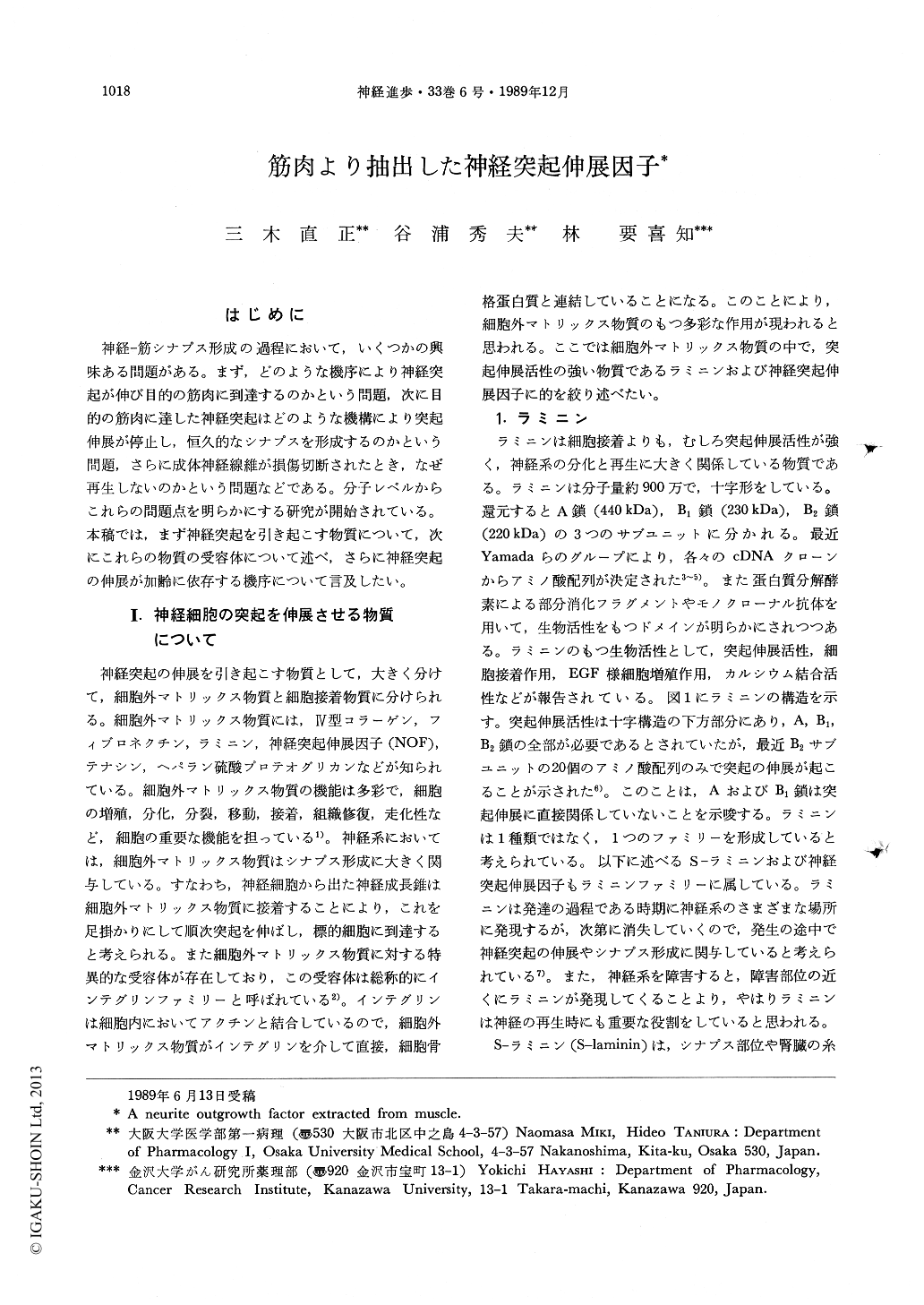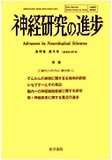Japanese
English
- 有料閲覧
- Abstract 文献概要
- 1ページ目 Look Inside
はじめに
神経—筋シナプス形成の過程において,いくつかの興味ある問題がある。まず,どのような機序により神経突起が伸び目的の筋肉に到達するのかという問題,次に目的の筋肉に達した神経突起はどのような機構により突起伸展が停止し,恒久的なシナプスを形成するのかという問題,さらに成体神経線維が損傷切断されたとき,なぜ再生しないのかという問題などである。分子レベルからこれらの問題点を明らかにする研究が開始されている。本稿では,まず神経突起を引き起こす物質について,次にこれらの物質の受容体について述べ,さらに神経突起の伸展が加齢に依存する機序について言及したい。
Extracellular matrix proteins play an important role in sysnaptogenesis during the development and regeneration of nervous system. Laminin among many extracellular matrix proteins exhibits the highest activity in promoting the neurites from various nerve cells in vitro. We have purified a neurite out-growth factor (NOF) from chick gizzard smooth muscle. NOF markedly induced the neurite outgrowth from the ciliary ganglionic neurons. The properties of NOF revealed that NOF belongs to a family of laminin, although subunit structures were different from each other and the antibody against NOF did not inhibit the neuritic activity of laminin. The neurite outgrowth from the retinas was strictly age-dependent. The retinas until 8-day embryo markedly responded to NOF in explant culture, but thereafter the retinas rapidly lost the ability of neurite outgrowth until 13-day embryo. We found that a 82 kDa membrane protein in the retinas was a putative receptor for NOF. Therefore we investigated whether the NOF receptor and its activity decrease in the retinas with age. The NOF receptor (82 kDa protein) and its activity decreased with age and they well paralleled with the decreasing neurite outgrowth from the retinas of 8-day to 18-day embryos. The data suggest that the inability of neurite outgrowth from the retinas with aging is due to the decrease of NOF receptor.

Copyright © 1989, Igaku-Shoin Ltd. All rights reserved.


